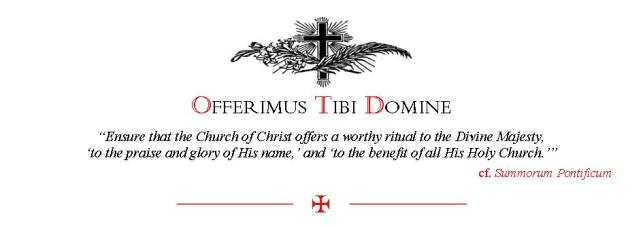I read over at Coprus Christi Watershed Blog that Bishop John Doerfler of the Diocese of Marquette, Michigan, has just released an Instruction on Sacred Music in Divine Worship entitled, "Sing to the Lord, All the Earth." The bishop said that the new Instruction is based on his predecessor, Archbishop Alexander Sample’s pastoral letter on Sacred Music. The letter, "Rejoice in the Lord Always", was written in 2013 and there was a series of reflections on our blog. To build on the foundation laid by Archbishop Sample, the new Instruction is issued to “elucidate the steps to be taken to promote Sacred Music in the Diocese of Marquette over the next five years”. These directives are to be implemented in all the parishes and schools throughout the diocese by December 31, 2020. The basics are that:
1. Parishes and schools will chant the Ordinary parts in the Roman Missal;
2. Parishes and schools will chant the Kyrie, Sanctus and Agnus Dei from the Missa Jubilate Deo;
3. Parishes and schools will chant the Communion Antiphon in English to a very simple tone;
4. A Diocesan Hymnal will be used to ensure the musical quality and doctrinal integrity;
5. The Diocesan Director of Sacred Music will provide workshops for parish musicians to assist them in the implementation.
If only we could get more support in all diocese for teaching the chant. We tried the Introit etc here in English for some time but decided that it wasn't as good as hearing it in Latin. There is a translation provided on the order of service sheet produced each week (I've encouraged people to have their own missals as well, rather than the dreaded missaletes or the even the parish Mass books, which are often very limiting).
But even the basic outline provided by the bishop above would be a great improvement on connecting the liturgy of today with our tradition, to say nothing of at least beginning to be more faithful to fulfilling the mandate actually given by the words in the Vatican II documents.
Sacrosanctum Concillium 116:
The Church acknowledges Gregorian chant as specially suited to the Roman liturgy: therefore, other things being equal, it should be given pride of place in liturgical services.
Sacrosanctum Concillium 23:
So no changes unless there is a real, proven, demonstrable need... And care must be taken that any new forms adopted should in some way grow organically from forms already existing." And care must be taken that any new forms adopted should in some way grow organically from forms already existing.
Sacrosanctum Concillium 54:
Steps should be taken so that the faithful may also be able to say or to sing together in Latin those parts of the Ordinary of the Mass which pertain to them.















